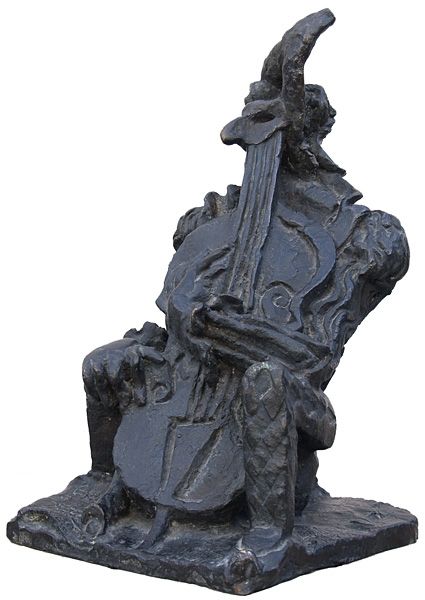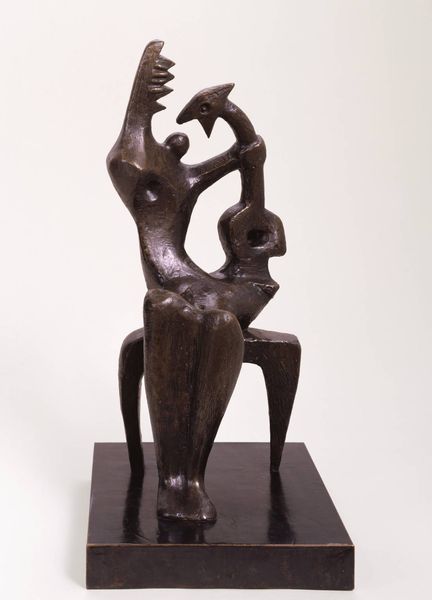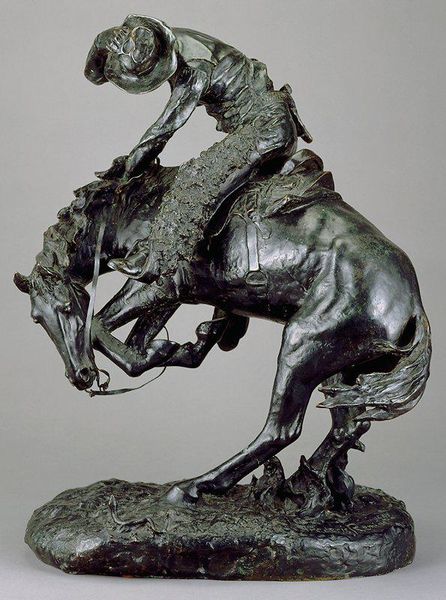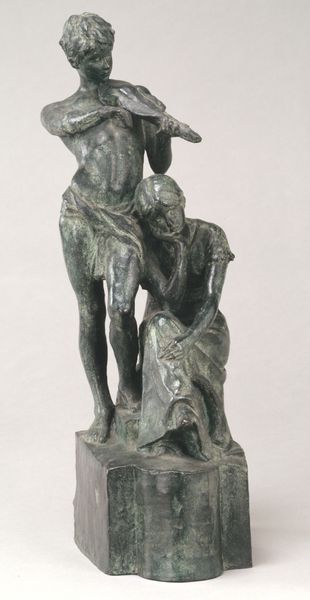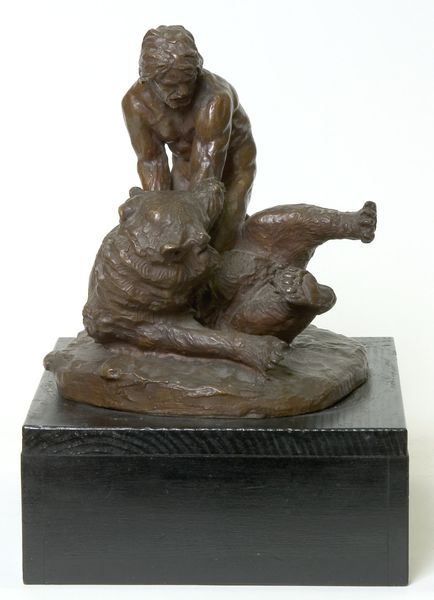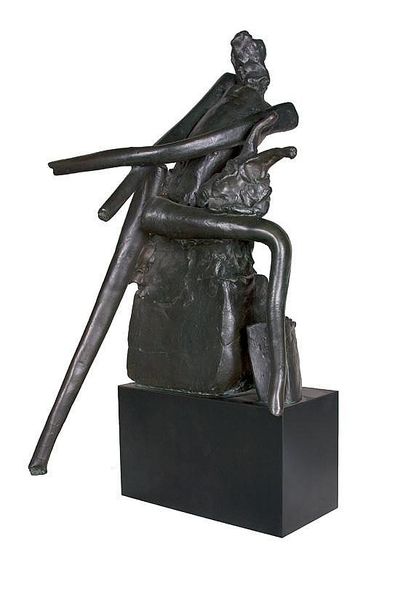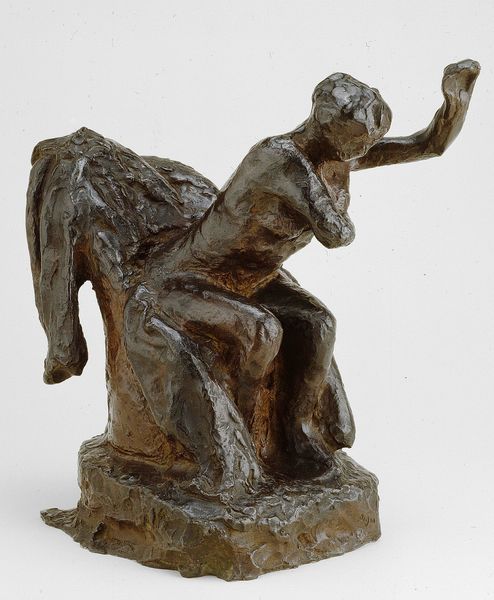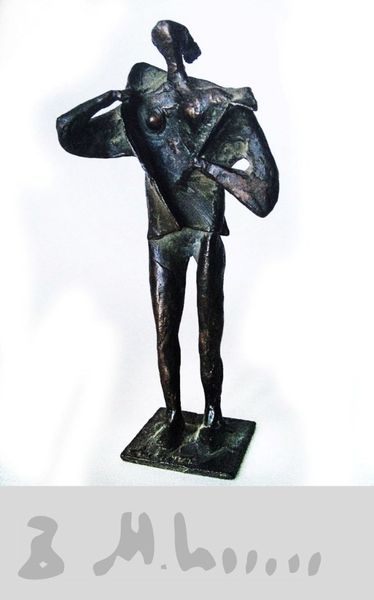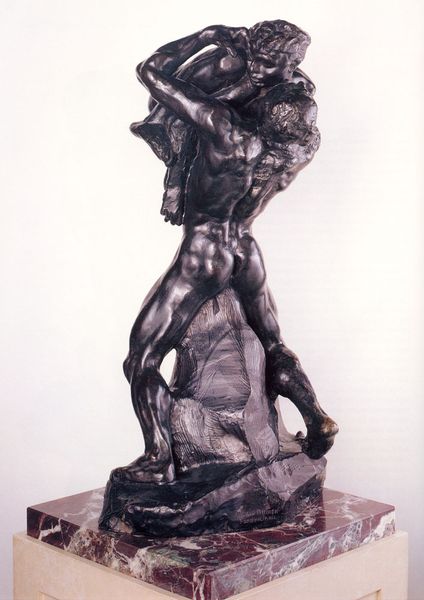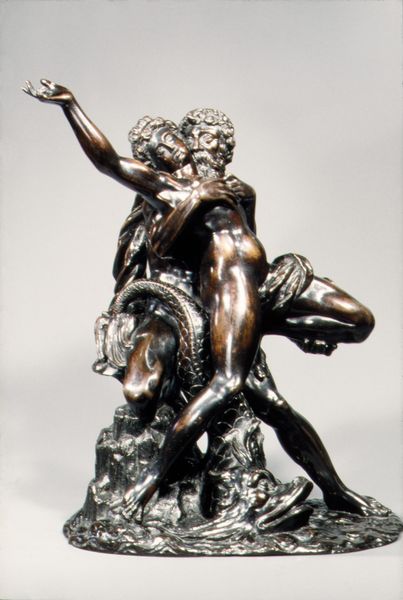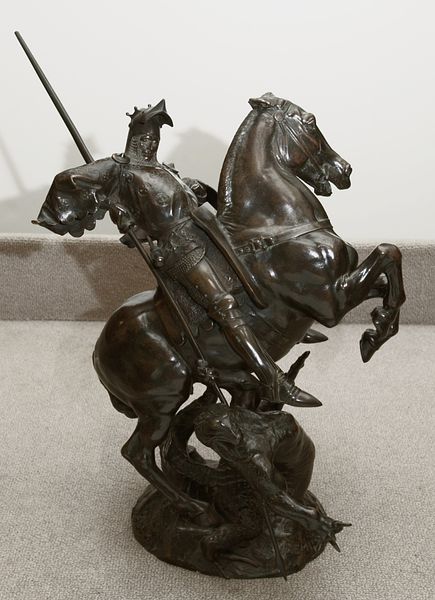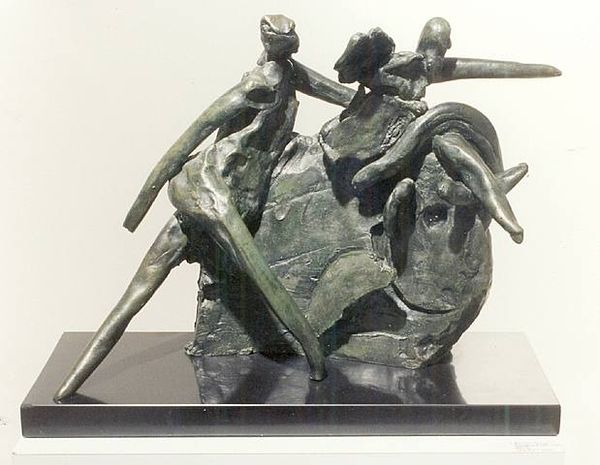
bronze, sculpture
#
sculpture
#
bronze
#
figuration
#
geometric
#
sculpture
#
abstraction
#
modernism
Copyright: Reuben Nakian,Fair Use
Editor: Here we have Reuben Nakian’s bronze sculpture, "Nymph and Satyr," created in 1981. I’m immediately drawn to the rough texture and the way the figures are almost merging with the rock. It feels very raw and primal. What’s your perspective on it? Curator: I am glad you noticed that. The casting process itself is really significant here. Consider the foundries Nakian would have been working with at the time. This bronze wasn't necessarily about replicating some idealized form. Instead, it highlights the material qualities – the surface texture, the pooling of the bronze, how gravity affected it as it cooled. It almost defies traditional notions of ‘high art.’ It pushes at the edges of craft. What does it make you think of in terms of labor? Editor: Well, it makes me think about the hands that shaped it, both Nakian’s and the foundry workers. It also raises the question of accessibility, doesn’t it? Bronze, even with these “imperfections,” is still a costly material. Curator: Exactly! The economics are inherent. Who has the means to produce something like this, and for whom is it intended? Furthermore, how does the consumption of the work—its placement in a private collection versus a public museum—change its meaning? This speaks volumes about class and the cultural capital invested. Editor: So it's not just about the myth of the nymph and satyr; it’s about the means of depicting it in this particular way, using these materials. Curator: Precisely. The narrative element is less compelling for me than the interplay between the raw bronze and the modernist exploration of form. Nakian seems more interested in showing you what bronze can *do* than in telling you a story. How does this impact our viewing experience? Editor: It makes me see the process as part of the art itself. I usually focus on what the artist is trying to say, but you’re right. Looking at the materiality opens up a whole new way to appreciate it. Curator: Yes, and by interrogating those production aspects, we come away with a fresh and layered perspective. It reveals that art isn't solely about the idea; it's intrinsically linked to the very physical conditions of its creation.
Comments
No comments
Be the first to comment and join the conversation on the ultimate creative platform.

